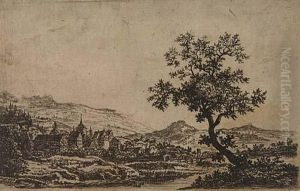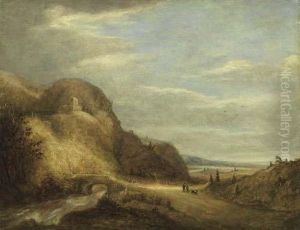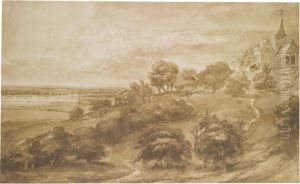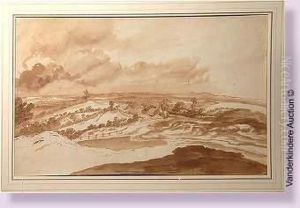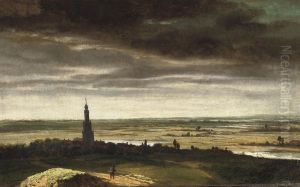Jan Ruijscher Paintings
Jan Ruijscher, also known as Johannes Ruischer or Ruysscher, was a Dutch Golden Age painter, primarily recognized for his landscape and marine paintings. Born in 1586 in the Netherlands, Ruijscher's exact birthplace is somewhat ambiguous, as records from that period are scarce. However, his work predominantly reflects the Dutch landscape, suggesting a strong connection to his homeland.
Ruijscher's artistic journey began in the early 17th century, a period when the Dutch Republic was experiencing unprecedented economic growth and cultural flourishing, known today as the Dutch Golden Age. This era was marked by significant advancements in trade, science, military, and art. Amongst this cultural renaissance, Ruijscher developed a unique style that captured the serene beauty and intricate detail of Dutch landscapes and seascapes. His paintings often depicted tranquil scenes of the Dutch countryside, bustling ports, and ships braving the tumultuous seas, which were emblematic of the Dutch spirit of exploration and maritime prowess.
Although not as widely recognized as some of his contemporaries like Rembrandt or Vermeer, Ruijscher contributed significantly to the development of landscape and marine painting. His work is characterized by a meticulous attention to detail, a harmonious use of color, and an ability to convey the mood and atmosphere of a scene. Ruijscher was particularly adept at rendering water, whether it be the calm waters of a Dutch canal or the rough seas of the Atlantic, capturing its movement and reflective qualities with a remarkable sense of realism.
Jan Ruijscher's contribution to the Dutch Golden Age of painting was his ability to encapsulate the essence of the Dutch landscape and maritime culture in his work, providing future generations with a window into the Netherlands of the 17th century. Sadly, his life and career were cut short when he died in 1637. Despite his relatively brief career, his paintings continued to influence Dutch landscape and marine painters for years to come. Today, Ruijscher's works are preserved in various museums and collections around the world, serving as a testament to his skill and the enduring beauty of the Dutch Golden Age.
